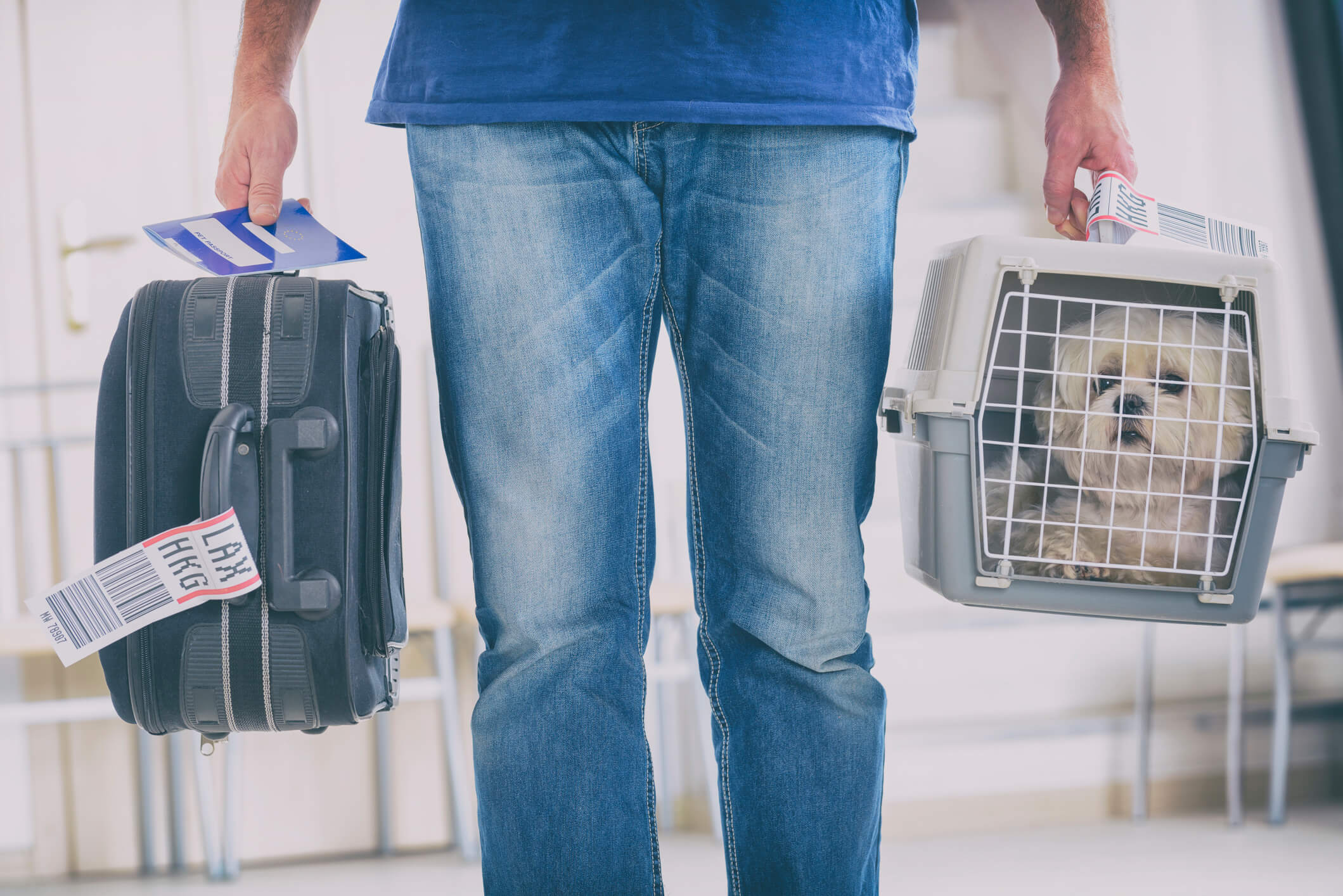
The Ultimate Guide to Flying with a Dog
Most dog lovers can’t wait for the opportunity to bring their precious pups on vacation. It might be a joy for you to bring your pet along, but for them, it might be a stressful situation!
If you’re planning to hop on a plane with your furry friend soon, make sure you’re prepared to make the trip as easy and stress-free as possible. These tips offer all the advice you need for safe travels in the sky.
How to prepare for the trip
The best way to ensure a smooth flight is through thorough preparation. Consider all your pet’s needs in advance to avoid running into problems at the airport. If you’re new to flying with a dog, these tips are a great place to start.
- Review the airline policies: Each commercial airline will have its own rules regarding pet travel. Some companies require that all non-service animals ride in the cargo hold, while others forbid it due to safety concerns. Many airlines won’t allow short-nosed dog breeds to fly at all because the change in air pressure can cause breathing difficulties. Additionally, senior pets and those younger than eight weeks usually aren’t fit to endure rigorous travel. Visit the airline’s website and brush up on their policies about size, age and breed restrictions to make sure your pup is okay to fly.
- Look up pet fare rates: You don’t get to fly for free, and neither does your pet! Airlines usually charge pet fare, which can vary depending on your pet’s weight. Bigger dogs tend to rack up more expensive pet fees. Make sure you purchase your pet fare when you purchase your own plane ticket.
- Crate train your pet: Dogs have to travel in a carrier, regardless of whether they go in the cargo hold or ride with you in the cabin. Unfortunately, carriers might take some getting used to, so spend a few weeks leading up to the flight crate training your pet. Encourage your dog to hang out in there by filling it with toys, treats, comfy bedding and clothes covered in your scent. By the date of your flight, your pup’s carrier should feel like a second home!
- Schedule a vet appointment: The most important thing to do before your flight is make sure it’s truly safe for your pet to fly. Many airlines actually require a vet certificate signed within 10 days of travel to ensure this. Take your pet to the vet to check for underlying health problems that might restrict their ability to ride on a plane. They can also advise you on how to take care of the pet’s specific needs before, during and after the flight if they have any health conditions.
- Pack the essentials: A day or two before you fly, you’ll want to pack for both you and your pet. Of course, a suitable carrier tops the list. Dogs need hard-shell carriers with enough room to stand up and turn around. You should also make sure your pet’s crate is in good condition and is approved by the airline company. Other essentials include chew toys, a leash, doggy bags, bowls and a food supply. Pack extra meals in case the destination doesn’t sell your furry friend’s regular food.
The day of your flight
Once the day has finally come, it’s time to hit the skies! But before boarding, there’s still a few things left to cross off your checklist.
- Give your pet a good workout: Anyone would go stir crazy after spending hours on a plane, not least of all your dog! Burn off some of their energy early with a rigorous workout followed by training activities that will challenge their brain. A tired pup is more likely to remain calm during the flight.
- Take a potty break at the airport: At the airport, find a place to go for a walk and let your pup do their business. Going to the bathroom as close to your flight time as possible will minimize the risk of crate accidents. Feed your pet a light meal at least four hours before takeoff so they get business taken care of before you leave. To avoid an upset stomach, avoid giving your pet any new food or treats.
- Administer a calming supplement: Plane rides can be very scary for pets, especially if they have to ride in the cargo hold. Right before you board the plane, give your furry friend a calming supplement. This is a safer, natural alternative to sedation, which has been outlawed due to the risk of breathing difficulties and poor reaction times. In addition to a calming supplement, you can spritz a pheromone spray inside the carrier to help your pet feel safe.
When the family embarks on a much-needed vacation, the furry members of your household deserve to get in on the fun, as well. These travel tips will show your pet there’s nothing to be afraid of. Once you reach the destination, Fido will be glad he tagged along!



